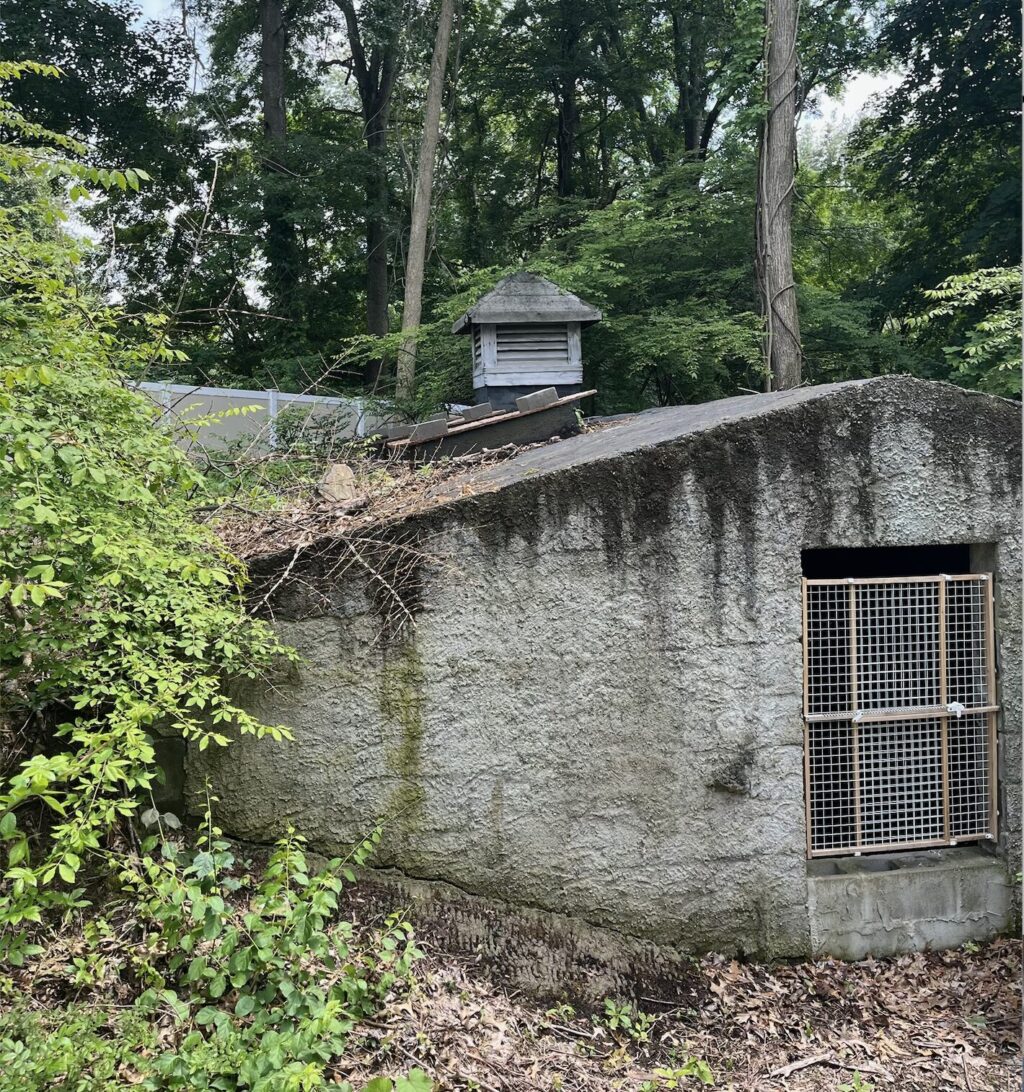More Than Meets the Eye

Cold storage unit on Blue Hills Road in Amherst, built ca. 1930.. Photo: Hetty Startup
Amherst History Month by Month
Amherst has a rich array of interesting sights, stories, and architecture dating from the late 19th century to the early 20th century. Recently, the Amherst Historical Commission was asked to weigh in on two demolition permit applications for quite modest buildings that got me thinking more about Amherst’s west side and perhaps generally, about a past era in town when the penetration of residential with commercial, service-industry buildings, barns, and outbuildings was easier to see and was seen as acceptable.
The first building we visited is off Blue Hills Road and was a mostly underground cement storage unit from the 1930s with fancy cupolas on its roof, the only part of the building not bermed into the slope of the back yard. (Think very fancy root or cold storage cellar where you can stand up straight like inside a tent).

We granted the demolition permit but not before documenting the structure that was probably used historically either by the family who owned the property for winter produce (potatoes most likely) or for possible commercial usage. Very little documentation existed for the building except for related secondary literature from the US Department of Agriculture on designing buildings for the storage of potatoes. The USDA pamphlet from 1917 diagrams a layout almost identical to the one we visited.


On the other side of Northampton Road, just south of the new Westside Historic District, we visited a small barn off Snell Street that had several different eras of timber construction and a newer asphalt shingle roof. It still had an opening for a hay loft. Older than the house that now stands in front of it, the barn is by a wetland and intermittent stream, and was constructed about 100 years ago. With the help of the present owner, it has weathered the storms but with no foundation, except corner boulders, was listing badly and was now held up by cables to nearby trees. We also granted a permit for demolition in this case.





Many of us would not think of these as significant structures as they are not high-style public buildings or private homes where someone (historically, mostly ruling class, white males) had lived or worked. By contrast modest outbuildings like these had assisted past generations to live better and more efficiently off the land, especially the rich farmland on the edge of what was once Lake Hitchcock. As such they are markers of the historic rural underpinnings of Amherst, suggesting too, the growing impact of the Massachusetts Agricultural College (aka, Mass Aggie) the precursor to UMass founded in 1863 to assist the descendants of farmers and mechanics with their education.
Another area where older service-orientated buildings once mixed with residential neighborhoods in Amherst is the Kendrick Park neighborhood, once known in the 1920s as “The Triangle” and now known for its new playground and the Archipelago buildings on East Pleasant and Triangle Street. (See here for a Graphic History of Kendrick Park (2003)).

This area marked an historic fork in roads to the north, both to Cushman and Leverett (East Pleasant, once called College Street) and to the UMass campus, North Amherst, and Sunderland (North Pleasant). About a hundred years ago, #3 East Pleasant Street was home to a new Amherst Laundry, a commercial outfit listed as industrial in type. It was designed by local architect, Edwin Bosworth, who had built a home nearby in 1913. It was possibly built by his father George E. Bosworth. Finished in 1919, the laundry was designed specifically to prevent or contain the spread of fire and was carefully inspected in relation to these objectives by the Police department that at that time, handled town inspections. Small businesses devoted to carpentry, joinery, blacksmithing, wood-working, and other hand trades were also documented in this area. It lay to the south-west of residential neighborhoods such as Cottage/Chestnut Streets or Lessey and Kellogg Streets that edge the historic West Cemetery and what were once Amherst College’s stately fraternities, now converted to other uses. Some in town will remember “Cousin’s” a handy grocery store in a modest mall, set back from East Pleasant, next to what was once the Carriage Shops. It is a historic neighborhood that is under pressure and I’m thankful that the Kendrick family decided in 1930 to set aside land for the park we know today.





